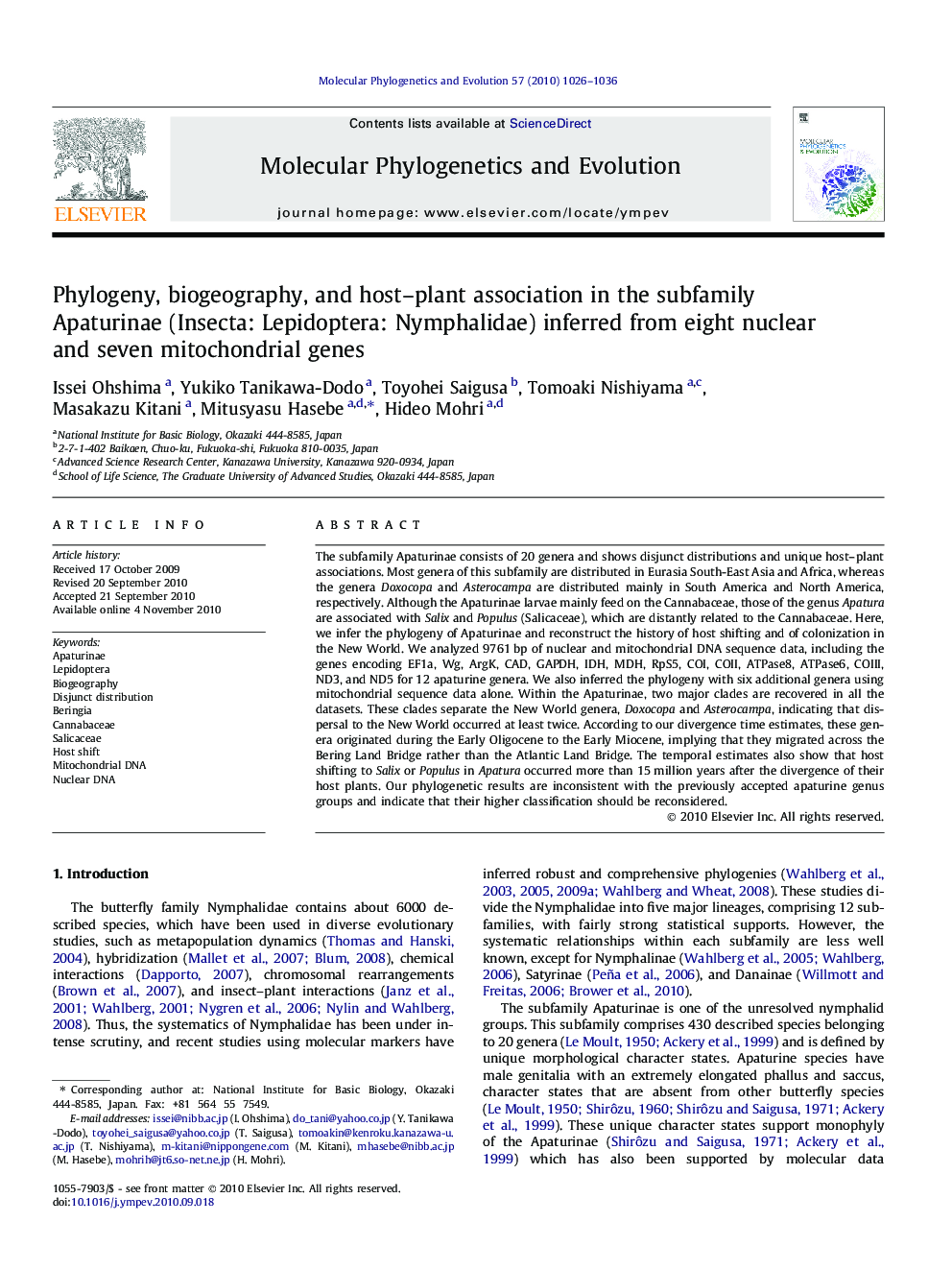| کد مقاله | کد نشریه | سال انتشار | مقاله انگلیسی | نسخه تمام متن |
|---|---|---|---|---|
| 2834251 | 1164302 | 2010 | 11 صفحه PDF | دانلود رایگان |

The subfamily Apaturinae consists of 20 genera and shows disjunct distributions and unique host–plant associations. Most genera of this subfamily are distributed in Eurasia South-East Asia and Africa, whereas the genera Doxocopa and Asterocampa are distributed mainly in South America and North America, respectively. Although the Apaturinae larvae mainly feed on the Cannabaceae, those of the genus Apatura are associated with Salix and Populus (Salicaceae), which are distantly related to the Cannabaceae. Here, we infer the phylogeny of Apaturinae and reconstruct the history of host shifting and of colonization in the New World. We analyzed 9761 bp of nuclear and mitochondrial DNA sequence data, including the genes encoding EF1a, Wg, ArgK, CAD, GAPDH, IDH, MDH, RpS5, COI, COII, ATPase8, ATPase6, COIII, ND3, and ND5 for 12 apaturine genera. We also inferred the phylogeny with six additional genera using mitochondrial sequence data alone. Within the Apaturinae, two major clades are recovered in all the datasets. These clades separate the New World genera, Doxocopa and Asterocampa, indicating that dispersal to the New World occurred at least twice. According to our divergence time estimates, these genera originated during the Early Oligocene to the Early Miocene, implying that they migrated across the Bering Land Bridge rather than the Atlantic Land Bridge. The temporal estimates also show that host shifting to Salix or Populus in Apatura occurred more than 15 million years after the divergence of their host plants. Our phylogenetic results are inconsistent with the previously accepted apaturine genus groups and indicate that their higher classification should be reconsidered.
.Figure optionsDownload as PowerPoint slideResearch Highlights
► Two major clades are recovered in Apaturinae.
► Dispersal to the New World occurred at least twice through the Bering Land Bridge.
► Host shifting to Salix or Populus occurred more than 15 million years after the divergence of the plants.
► Higher classification of Apaturinae should be reconsidered.
Journal: Molecular Phylogenetics and Evolution - Volume 57, Issue 3, December 2010, Pages 1026–1036